This Designer Is Fighting the Stigma Around Medical Therapy, Aging, and Intimacy Through Interiors That "Pull You Out of the Everyday"
When conceived purposefully, "a space can totally change people's mindset and feelings about something they previously found intimidating," says wellness design expert Madelynn Ringo
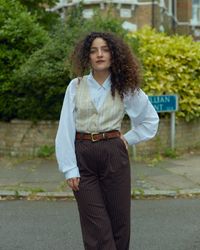
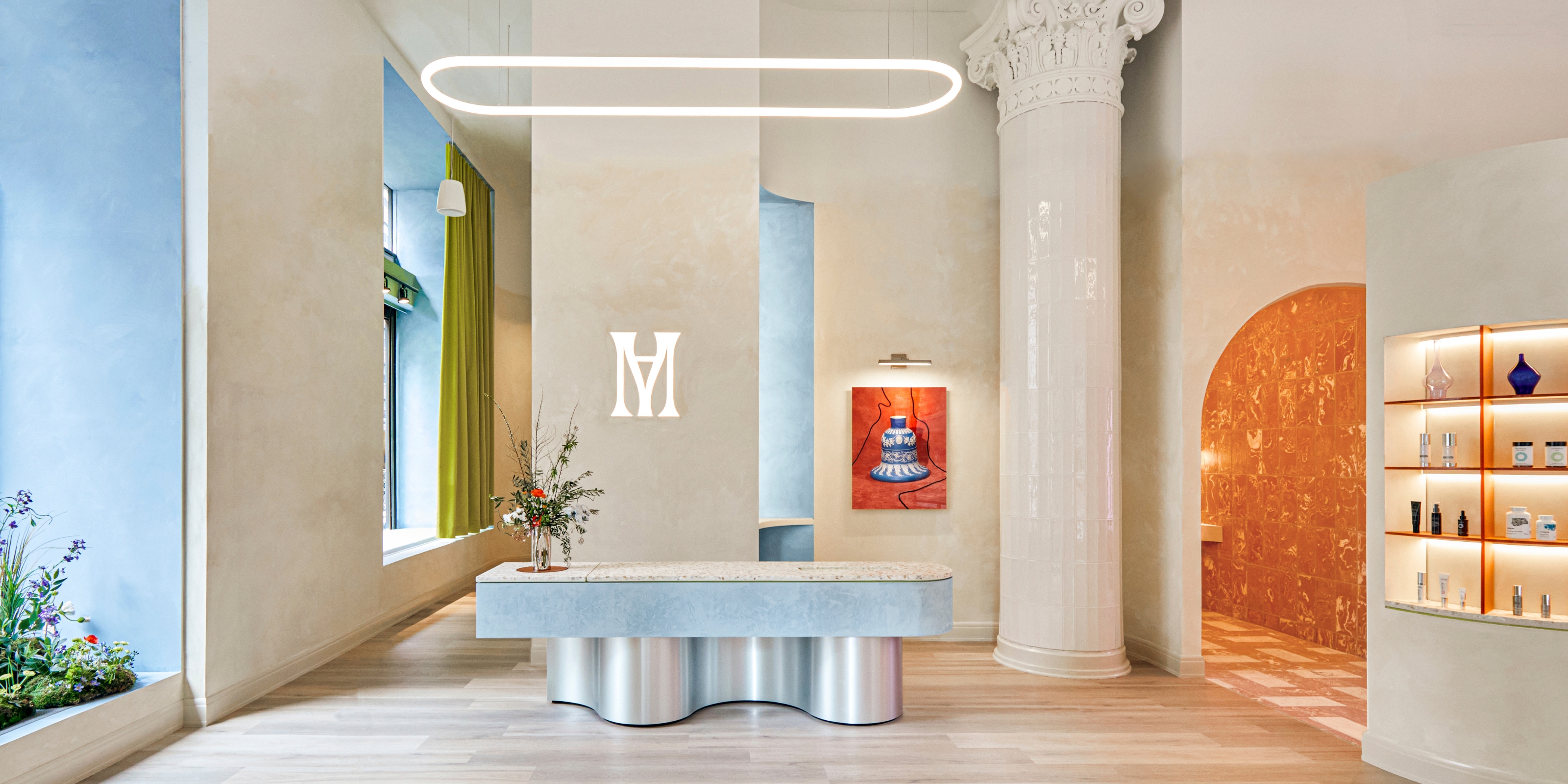
That beauty and well-being clinics are increasingly sought-after is no big news. After all, there hasn't been a single era more obsessed with surface-level improvement — think of the rise (and rise) of cosmetic surgery — and preventative health — think of that of diagnostic scans-equipped centers — than the one we are in right now. The evidence is all over the internet, where countless 'before and after' social media posts attest to the transformative power of aesthetics-led surgical procedures or longevity-aiding measures that promise to protect our body from the signs of time, like the below-zero cryotherapy, which exposes patients to extremely low temperatures to facilitate muscle recovery and destroy cells associated with specific illnesses. What's fairly new, though, is the arrival of unusually imaginative dental, aging, and fitness hubs where interior excellence, chromotherapy, and craftsmanship meet state-of-the-art lifestyle.
Traditionally, health isn't the sector you'd expect to champion forward-thinking design. Sure, there have been exceptions to the rule, like NYC's dazzling Zitomer pharmacy, which, founded in 1950 and located in Manhattan's iconic Upper East Side, was brought back to its former Art Deco glory by RPG's Bruce Teitelbaum in 2021, now reviving its original apothecary look through statement lighting, soft arched walls, and plush velvety touches. But most of these creatively envisioned, well-being-focused destinations are only just opening their doors.
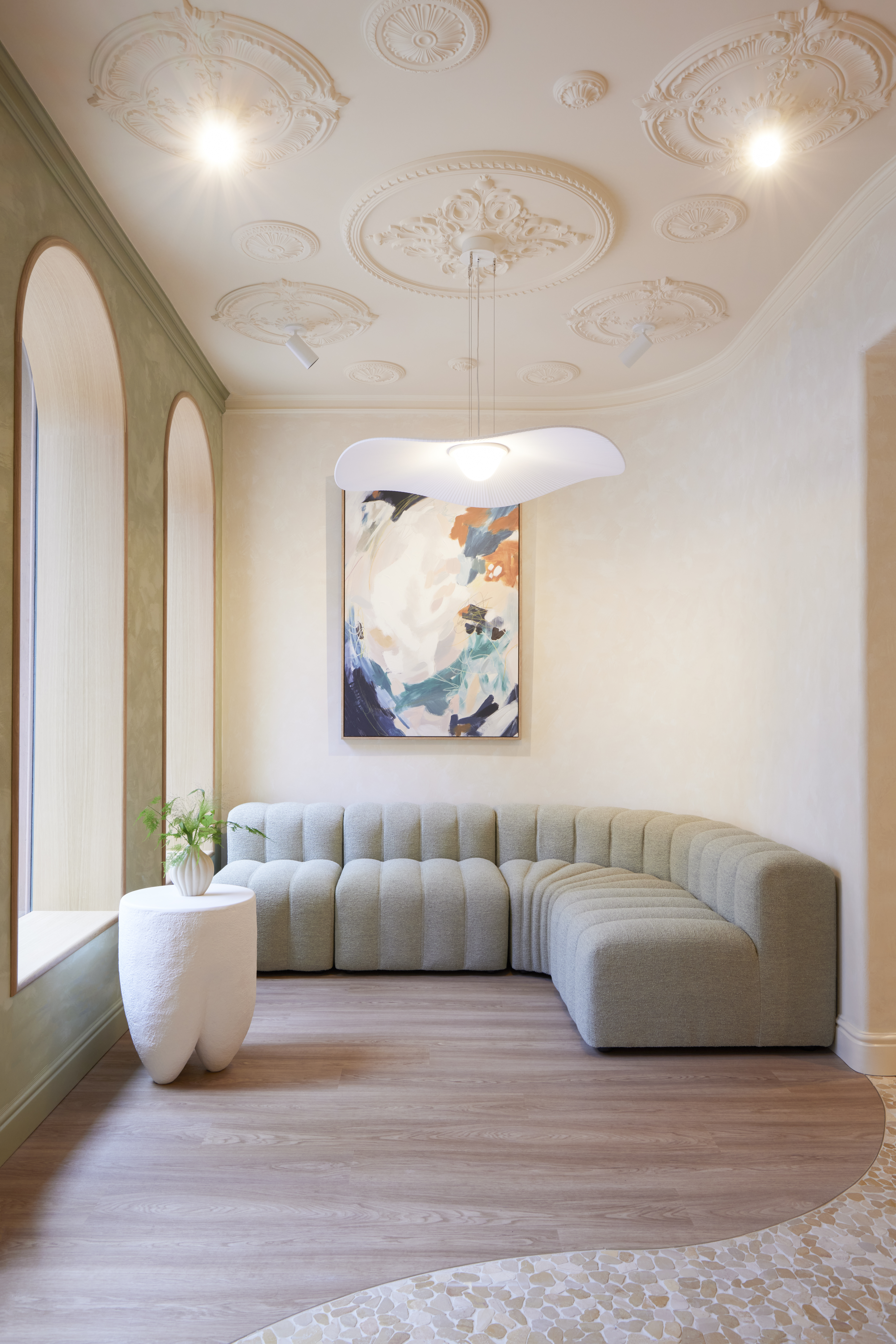
This March, a retro-futuristic "aging management" clinic housed within a 1925 palazzo, where James Turrell-style porthole windows, opaque chrome finishes, and neon lights meet polished marbles, coffered ceilings, and classical floor mosaics, landed in Milan courtesy of Doctor Giulio Borbon's namesake Studio. Dressed in custom-made Prada staff scrubs, his team helps patients enhance their natural appearance through meticulous procedures informed by a search for harmony. Meanwhile, in London, Neko Health's just-unveiled utopian scanning suite — a pastel-shaded, sinuous architectural exercise that looks straight out of Severance — grants people a thorough overview of their physical condition in less than ten minutes, along with a crash course in Space Age design. These centers' cinematic feel makes them immediately pleasing to the eye. Still, the benefits of wellness design go beyond fleeting first impressions.
"What gets me most excited about my job is collaborating with CEOs who are on a mission to change consumer behavior, whether that be reducing the stigma around sexual wellness and going to the doctor, or what that experience feels like," Madelynn Ringo, founder of Brooklyn-based architectural design firm Ringo Studio, tells me.
A Yale University graduate, she started off working at more traditional architecture practices before discovering her interest in developing concepts and spaces for the public after joining American beauty brand Glossier as a Senior Retail Designer in 2019, where she contributed to crafting the storytelling, shopping experience, and interiors of the house's Miami, Boston, Austin, and Atlanta outposts. Since establishing her studio, which launched in August the following year, Madelynn has continuously cherished the lessons learned through those immersive projects to come up with destinations that "connect with people in a way that feels new and unique to that location".
Inside the Rise — and Rules — of Wellness Design
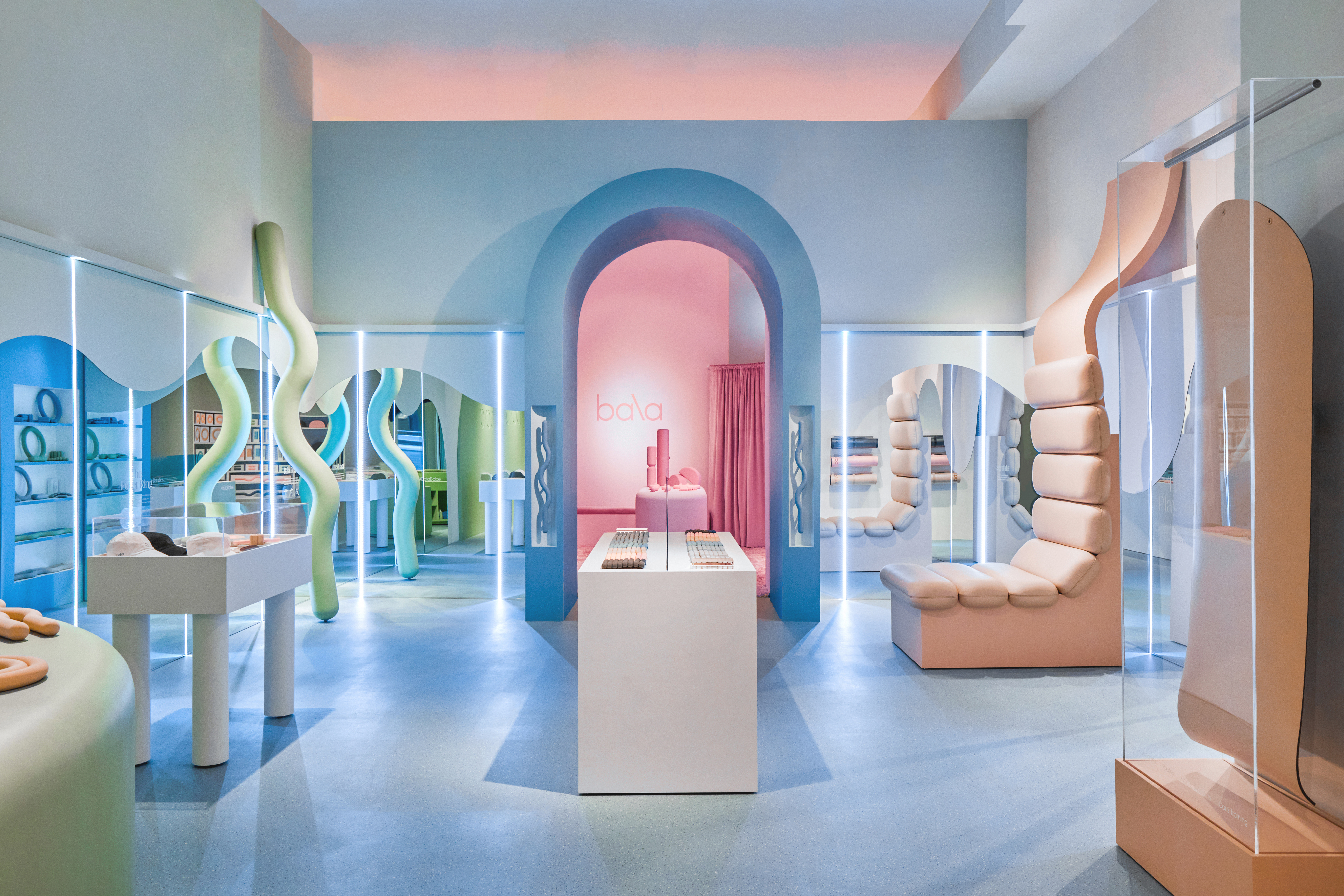
Today, her portfolio, characterized by a sculptural, multisensory use of materials, eye-catching, albeit largely muted, hues, and a particular attention to how the structure of specific spaces can make us feel, "is split 50/50 between wellness and retail brands," explains the designer. Over the last five years, she has lent her artful vision to anything from oral health practices and sexual and aging wellness-dedicated spaces to the ever-evolving fitness universe, realizing stores and medical clinics that promote a more joyful and less sterile and impersonal conception of these places. So, what are the key rules to succeed at this game, and why do they matter?
The Importance of Color, Lighting, and Space Sculpting
"Our number one rule is to avoid anything that feels generic or expected," Madelynn says, reflecting on how, with the oversaturation of visual experiences we are all subjected to on social media, "there is a risk for everything to start becoming the same." This is something that, she explains, can be prevented by being intentional and playful about color, engaging viewers with a complex, nuanced scheme that unfolds organically, as well as lighting, both of which are crucial to foster wayfinding — or the act of using any available cues to navigate a physical environment — and storytelling within a space. The third component of every Ringo Studio project, and particularly those executed in the realm of wellness design, is "the making of a sculptural space". A quick glance at any of them will reveal how "we play along with a lot of curves — [a stylistic choice] that comes from my own reaction to things that are more human and soft, and that make me feel more comfortable and safe," the designer says.
Her sensitivity to specific shapes and silhouettes is what allows her to bring her soothing understanding of interiors to life, "because thinking about the design is one thing, but considering how others react to it is where you really start to combine wellness strategy and aesthetics together". That's also where sequencing, or experimenting with volumes and shades to guide people through space, comes into play. "When somebody enters a space, it's a big moment," Madelynn says. "They're leaving whatever it is that they just came from to interact with this environment for the first time, which is why the entry sequence is crucial to transporting them to a different mindset."
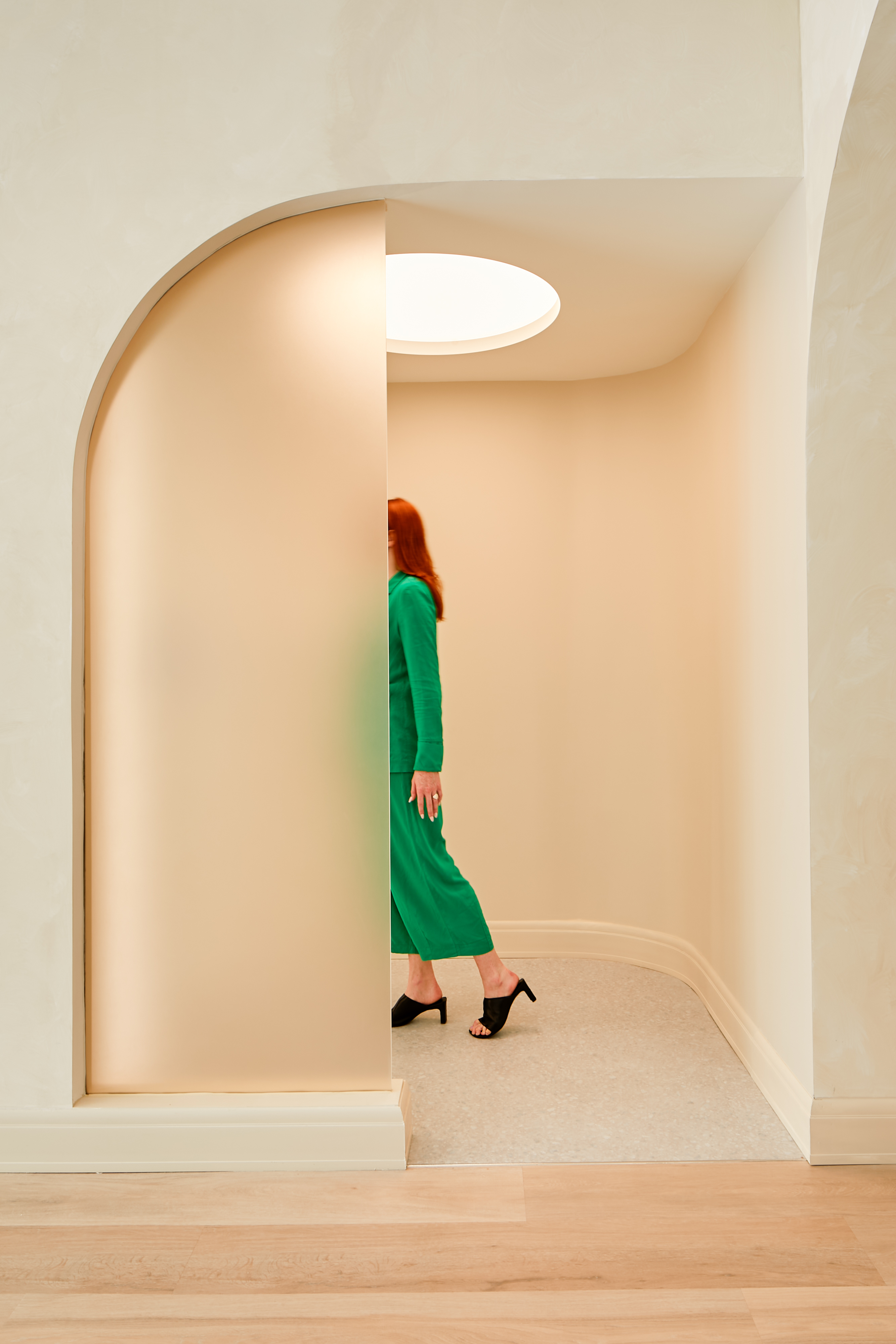
Sequencing to Create — or Release — Anticipation
Sequencing occurs when, "from room to room, your color palette changes, but it can also come from a sculptural alteration, or how you purposefully compress a space and then move somebody into a much wider, open-plan one," she says. More than just a design element, "it's about taking somebody on a journey," adds the designer. "Think about when someone is transitioning from a welcome reception down a hallway into a treatment room at a health center, for example; there should be visual cues that excite each of those and build anticipation."
From a lobby and a corridor to a door handle, every aspect of wellness-oriented destinations should consider how those walking through them will feel. Psychologically, a long, narrow room with a series of doors can upset you, Madelynn says, referring to the structure of many medical facilities, including hospitals. "Focusing on evoking a sense of calm and trust within the person experiencing it, you can totally change their mindset and feelings about something they previously found intimidating," she adds. Her favorite commission so far, a stunningly curated, moody retail concept for sexual wellness brand Contact Sports in SoHo, put that into practice.
The brief was simple: "undoing the taboo about shopping for sex toys by leaning into the label's narrative". Upon entering the space, people would be met by a flower shop-like counter blooming with red roses as a "gesture from the house". This was followed by a nostalgic succession of wood-paneled rooms imbued with a 1970s burgundy, emerald, and dark walnut palette, each boasting carefully styled clothing rails and shelves stacked with retro sports heirlooms. Rather than feeding into the stereotypical idea of what a sex shop looks like, the designer aimed for a space "that felt elevated and inherently experiential". "Even before you saw the merchandise, we had already taken you somewhere else," she says.
"Evoking a sense of trust within the person experiencing a space, you can totally change their feelings about something they previously found intimidating"
— Madelynn Ringo
Past that first environment, "visitors were guided into what felt like a locker room, where the ceiling was lowered and the lighting got softer, more diffused, and glowing," Madelynn continues. Finally, they reached a taller platform in a third room, where a sculptural, semicircular lounge area, decorated with a custom rug, a large-scale, baseball glove-shaped armchair, original photography, and more products, "offered customers the opportunity to stop for a moment and hang out". It was a collaboration that enabled Studio Ringo to "become really tongue-in-cheek, extravagant, and inventive with our style," says the founder.
This is something that came as an evolution of her detail-oriented, slowly-revealing approach to interior design, which is particularly tangible at Modern Age, an integrated aging wellness center she designed in New York a couple of years back. Here, "there was a really dramatic, curvy light sculpture at the top of each treatment chair. Whenever a customer was brought in, the light was a certain color and level of brightness, but then, when they were ready to receive their IV treatment, clinicians would dim it to a comforting, warm amber tone," Madelynn explains. This way, "the lighting wasn't just sequenced for when they arrived, but it even had operational features that could add to different moments within that experience."
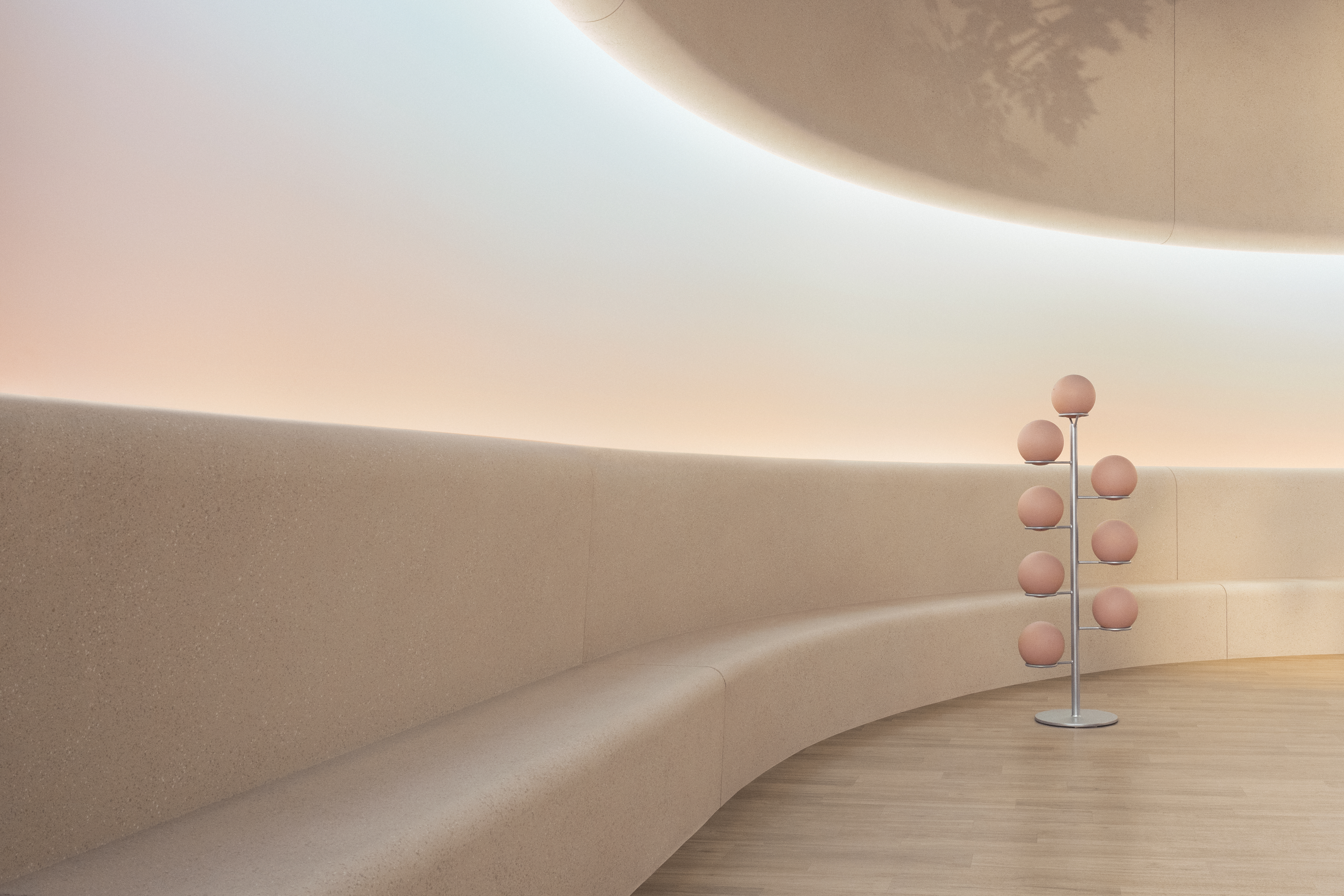
Matching Palette and Storytelling
Earthy, organic neutrals like terracotta, ochre, or a chocolatey brown and sea-inspired shades like petrol green are the first hues that come to mind when I think of colors that help me feel grounded. But the designer insists palette guidelines aren't as strict as you'd think when it comes to building a scheme that feels as welcoming and evocative as peace-inducing. "If used strategically, all color can have a positive influence on those who experience a space and their emotions," she says. Doing so means finding ways to connect your chosen material palette to the core narrative and story of the project.
SAMA, the oral health practice set up in Flatiron by dentist Jaskaren Randhawa to encourage a holistic approach to well-being, starting with the teeth's own, is a prime example of that. In Sanskrit, "'sama' means balance," Madelynn explains. To render the relationship between nature and wellness at the heart of the founder's mission, "we tapped into this sagey green color that was applied in different highlighted moments throughout the space," she recalls.
Elsewhere, like at a forthcoming bath house the designer is still finalizing, "we are exploring deeply saturated, burned reds, which signal comfort, warmth, and heat, balancing them with light, airy shades that, together, nod back to the hot-cold therapy that serves as the concept of the business". Meanwhile, for Modern Age, which sought to remove the shame around aging management, she selected colors that immediately uplifted those who stepped in "to acknowledge and take care of their health", like a peachy tan, a baby blue, and a pop of chartreuse — bold hues that "besides differentiating the hub from the rest of the industry, created a combination that made visitors feel immediately relieved, happy, and lighter".
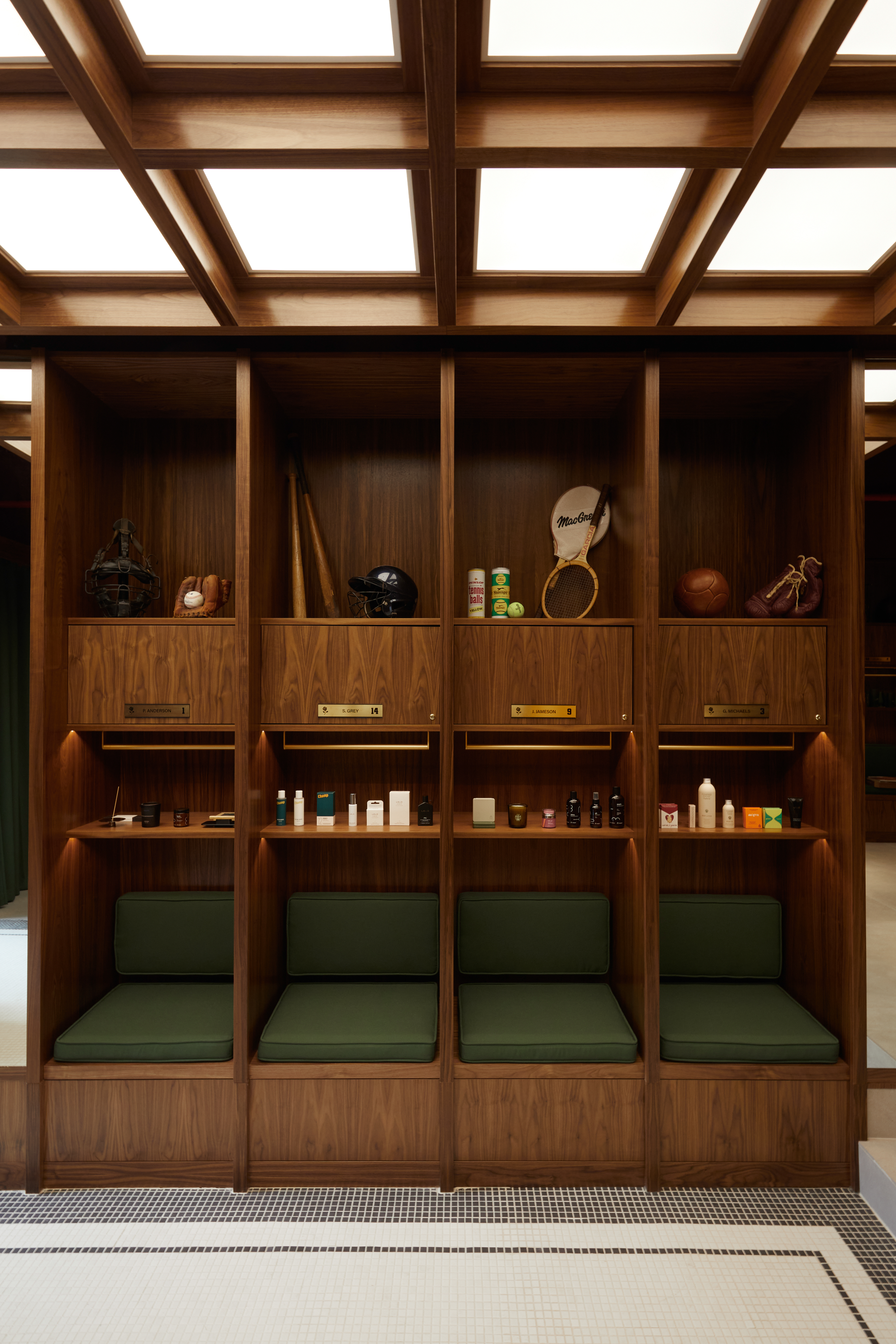
Searching for new ways to let this invigorating, 'surprise-effect' side of design manifest in her work is what drives Madelynn forward. "The spaces I'm most interested in designing are spaces where I see a lack of design, or an opportunity for it," she says, hinting at how her research spills outside of working hours. Need an example? "When I lie on my mat at the gym, staring at the ceiling, I'm like, 'why isn't the ceiling beautiful?' We're looking at it for so long in this class, but it's not being taken into consideration as something that could enhance the experience," the designer explains. Along with crafting a full spa, envisioning a female-focused gym is high on the list of her aspirations.
"If we think about the interior aesthetics and the decisions that have been made in most fitness centers, they all feel very masculine-oriented," she says. "The decor is clear-cut and rough, but could a different design strategy help make those spaces more comfortable and inviting for women? Does a gym necessarily have to feel so raw and bare, or can it be immersive, like some of the other wellness spaces that we're seeing today?" The answer, of course, is clear in her work.
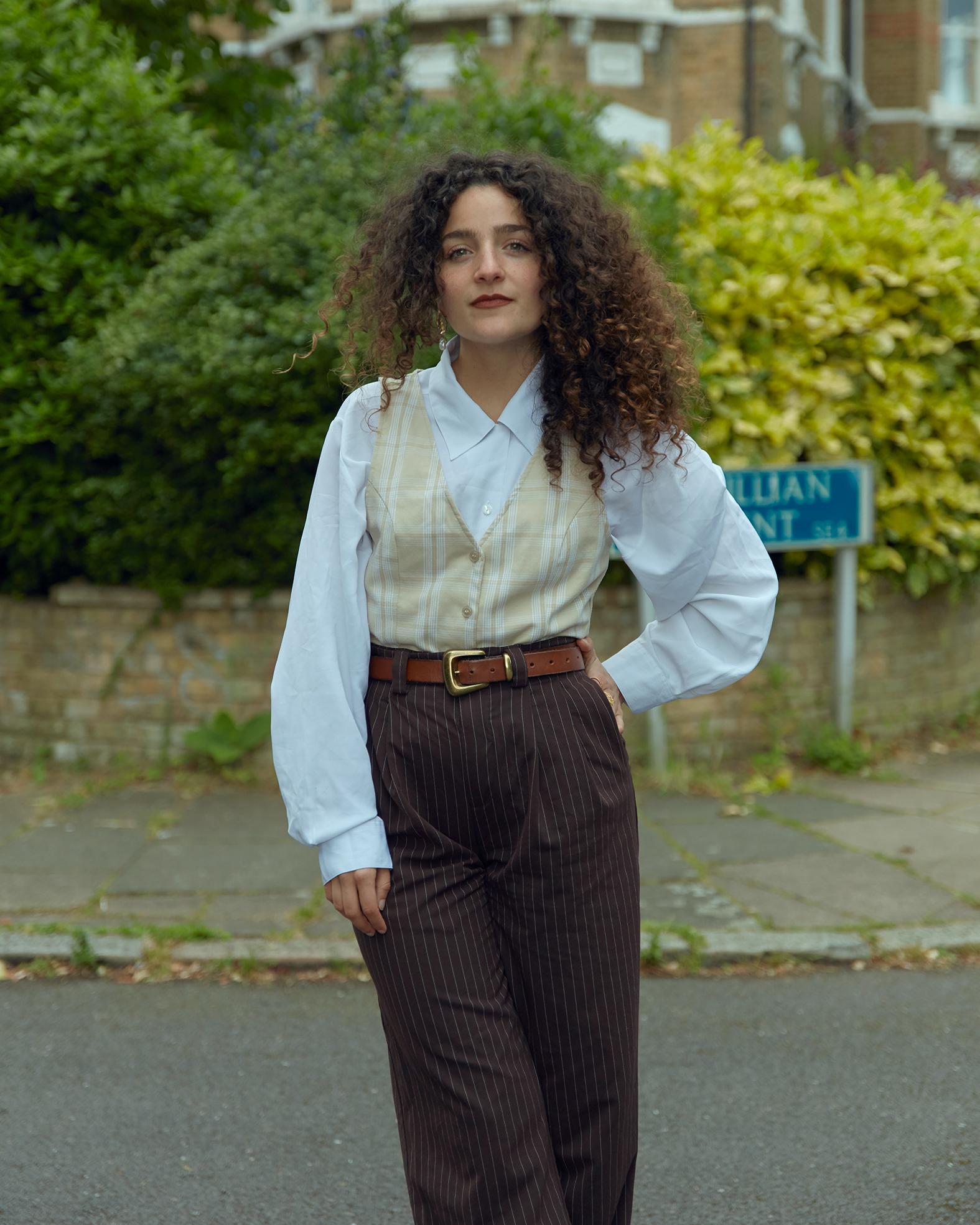
Gilda Bruno is Livingetc's Lifestyle Editor. Before joining the team, she worked as an Editorial Assistant on the print edition of AnOther Magazine and as a freelance Sub-Editor on the Life & Arts desk of the Financial Times. Between 2020 and today, Gilda's arts and culture writing has appeared in a number of books and publications including Apartamento’s Liguria: Recipes & Wanderings Along the Italian Riviera, Sam Wright’s debut monograph The City of the Sun, The British Journal of Photography, DAZED, Document Journal, Elephant, The Face, Family Style, Foam, Il Giornale dell’Arte, HUCK, Hunger, i-D, PAPER, Re-Edition, VICE, Vogue Italia, and WePresent.